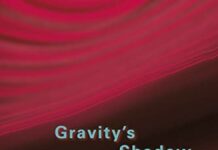
Ebook Info
- Published: 2017
- Number of pages: 416 pages
- Format: PDF
- File Size: 5.09 MB
- Authors: Harry Collins
Description
A fascinating account, written in real time, of the unfolding of a scientific discovery: the first detection of gravitational waves.Scientists have been trying to confirm the existence of gravitational waves for fifty years. Then, in September 2015, came a “very interesting event” (as the cautious subject line in a physicist’s email read) that proved to be the first detection of gravitational waves. In Gravity’s Kiss, Harry Collins—who has been watching the science of gravitational wave detection for forty-three of those fifty years and has written three previous books about it—offers a final, fascinating account, written in real time, of the unfolding of one of the most remarkable scientific discoveries ever made. Predicted by Einstein in his theory of general relativity, gravitational waves carry energy from the collision or explosion of stars. Dying binary stars, for example, rotate faster and faster around each other until they merge, emitting a burst of gravitational waves. It is only with the development of extraordinarily sensitive, highly sophisticated detectors that physicists can now confirm Einstein’s prediction. This is the story that Collins tells.Collins, a sociologist of science who has been embedded in the gravitational wave community since 1972, traces the detection, the analysis, the confirmation, and the public presentation and the reception of the discovery—from the first email to the final published paper and the response of professionals and the public. Collins shows that science today is collaborative, far-flung (with the physical location of the participants hardly mattering), and sometimes secretive, but still one of the few institutions that has integrity built into it.
User’s Reviews
Reviews from Amazon users which were colected at the time this book was published on the website:
⭐Author Harry Collins, a distinguished sociologist of science, had the remarkable persistence to study for over forty years the various attempts to detect the existence of gravity waves predicted by Einstein. During that time, Collins became enmeshed in this research community and wrote multiple books on the search. This despite its continued failure to detect a gravity wave. But he hung on until an international cooperative of over 1,000 scientists succeeded in 2015. By that time, using the internet, Collins could follow the unfolding discovery, communicate with participants, and write this latest book from the comfort of his sofa at home. It is a good story well told, giving an insider’s view of the reasoning and argument among physicists trying to interpret their data and socially construct an epochal “discovery.”What most interested me about this tale is the web of understanding that links people like Collins, who only marginally knows the physics, to those with core knowledge of gravity models, black holes, and interferometry. To bolster his own understanding, Collins turns repeatedly to physicist Peter Saulson, a faculty member at Syracuse University (as am I, though we have never met). Saulson’s lucid explanatory emails appear throughout the book. Yet we see that even Saulson doesn’t understand it all, so he seeks clarity from people elsewhere in the web. At the end of one chapter (p. 224), Collins emphasizes “all we [i.e., the physicists] have seen are a few numbers representing strains on some mirrors [i.e., interferometry data] and all that has been described [as a gravity wave] is a structure built on trust and a huge and intricate body of social agreements about what these must be taken to mean.“ That is, of course, the social web of understanding, within which no person knows everything. Remarkably, we trust these scientific webs unless they conflict with our strongly-held ideologies about, say, climate change or Noah’s Flood.Collins explanations are clear but perhaps include too much detail for most readers. I sometimes skimmed, probably without missing anything important. I wish he had addressed how physicists were recruited into the project. Who participated and who was left out, and why? These are quibbles. Overall, this is a fine sociological account of a landmark scientific accomplishment, perhaps the recipient of the next Nobel.
⭐I happen to live close to the Livingston LIGO facility so was extra-interested when the news of the gravitational waves discovery broke. This book provides a fascinating account of how the story unfolded, from the moment the instruments picked up the signals to the final decision to publish and go public with the discovery. If you want to know more about the process, scientific and social, of validating a Big Science discovery, this fits the bill. The pages fly by.
⭐Not for me! Disappointed that the book is a detailed story, my mistake, I rushed and bought it! I thought it is a scientific text, to the point. You might find it a great book but I do not have the time to spend on a story.
⭐A wonderful behind the scenes look at a major scientific discovery.
⭐The author is reporting on one of the seminal events in modern science. Really a once in a life time opportunity. And rather than writing a work that explains the underlying physics and the importance of the associated science, the reader is referred to his earlier works reporting on what were apparently intentional hoaxes within the investigating collaboration. Really small beans in comparison to the event reported here.This is book is at times little more than a collection of e-mails among consortium members. It seems rushed, under edited and misses a wonderful opportunity to translate important science and discovery into an accessible vernacular.
⭐absolutely disgusting the number and frequency of autoreferences, this fact devalue the book which would be divided in -the detection of GW- and -me me me buy my books- … a great story absurdly overburdened.
⭐I loved the details. I wish it contained detailed math on modeling the wave form.
⭐Great Book! Helped me understand the 50 year effort to detect gravity waves.
⭐Good service Book as described
⭐Teile sind sehr spannend. Insgesamt ist es aber eher ein Buch über Wissenschaftssoziologie als über Astronomie oder Physik, so dass es mich streckenweise doch nicht so stark interessiert hat.
⭐
Keywords
Free Download Gravity’s Kiss: The Detection of Gravitational Waves in PDF format
Gravity’s Kiss: The Detection of Gravitational Waves PDF Free Download
Download Gravity’s Kiss: The Detection of Gravitational Waves 2017 PDF Free
Gravity’s Kiss: The Detection of Gravitational Waves 2017 PDF Free Download
Download Gravity’s Kiss: The Detection of Gravitational Waves PDF
Free Download Ebook Gravity’s Kiss: The Detection of Gravitational Waves





